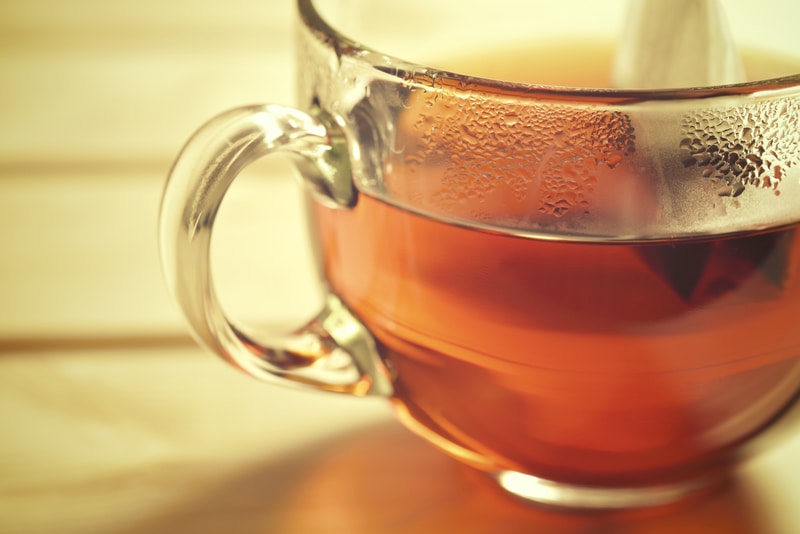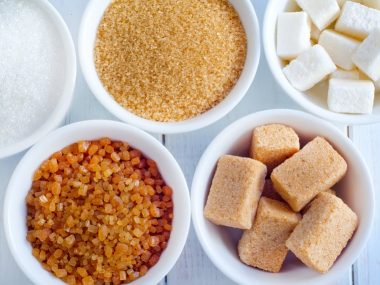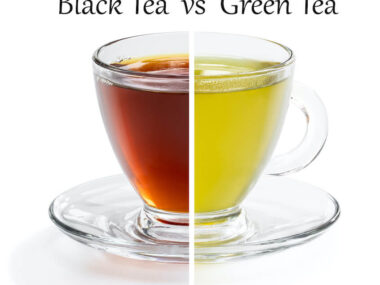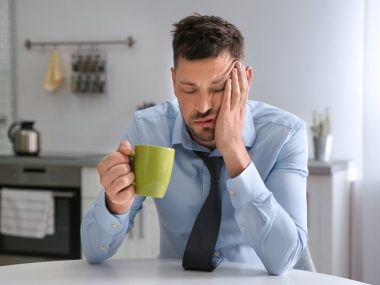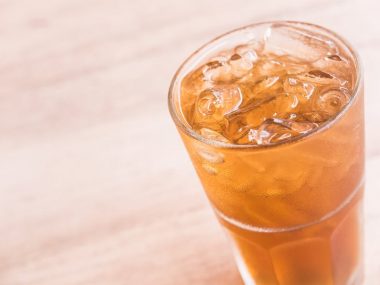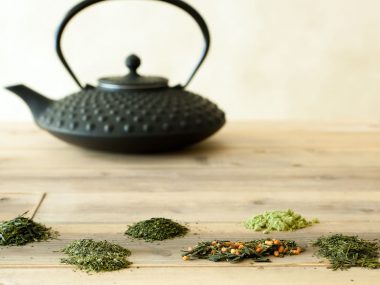There’s a chemical reaction that occurs once water and tea meet. If you want a superb cup of tea while reaping health benefits from tea, you don’t want to miss this read!
Table of Contents
What Does It Mean To Steep Tea?
By definition, steeping in the tea industry is the allotted amount of time it takes for water and tea leaves to marry. As beautiful and romantic as this may sound, it is something that has to happen for the perfect cup of tea.
Tea makers strive to produce a tea that will surrender to water under the right conditions. The water takes on components (known as constituents) in tea leaves to produce a certain flavor, aroma, and color while delivering health benefits. This process is known as “extraction.”
Moreover, you’ll often hear “brew” and “steep” used interchangeably. Assumably, the two terms are often mistaken as the same thing; however, “brewing” is the physical act of making tea, whereas “steeping” is one of the steps that go into brewing.

Factors That Affect Tea During Steeping
It helps to know about a few things that can affect steeping tea. These are important to be aware of, especially if you are caffeine sensitive or desiring to reap the health benefits of tea.
What Happens If You Steep Tea Too Long?
So, why should you not over steep tea? The number one reason you want to avoid over-steeping tea is to protect the integrity of the tea leaves to allow for optimal extraction. Extraction is when the water temperature and timing have to be in sync, so the water takes on the flavor and all of the health benefits of the tea leaves.
Something very interesting that you may not be aware of is that over-steeping also causes the caffeine level in true teas (black, green, oolong, yellow and white) to increase. A published research article (“Caffeine Content of Brewed Teas”) discussed the results of steeping times in numerous different brands and types of teas. The study conclusion determined that the amount of water used for a serving and the steeping time affected the caffeine content. The longer the steeping time, the higher the caffeine.
Hot Brew Vs. Cold Brew
A research study entitled “Effects of Alternative Steeping Methods On Composition, Antioxidant Property and Color of Green, Black, and Oolong Tea Infusions” sheds some light on hot water vs. cold water steeping. The study reveals how cold water steeping may take longer, but the beneficial tea constituents are higher with cold water brewing. This is due to the extended time of tea extraction into the water.
Cold Brew Vs. Hot Brew
The study reports that hot water steeping is a much faster alternative to get the extraction process going and over with. Still, the beneficial components in the tea are degraded compared to the gentle cold-water-brew method. It all comes down to kinetics in steeping. Cold steeping extracts more molecules that contain the benefits, whereas hot water steeping does not.
Loose-Leaf Tea Vs. Teabags: Steeping
Whether to choose loose-leaf tea or traditional tea packaged in teabags is where tea connoisseurs and everyday tea drinkers part ways on what they perceive to be better. Tea producers harvest and process tea in such a way, so it’s sold as loose-leaf or in teabags.
Loose-Leaf Tea
Pros
- Higher quality of tea because it is made from the whole tea leaf or buds.
- Processing methods protect the integrity of the tea leaves.
- Produces a smoother, less astringent cup of tea.
- The intentional act of brewing tea is relaxing and more fulfilling.
- Higher health benefits.
Cons
- More expensive.
- Takes longer to brew than teabag tea.
- Requires a teapot and strainer or infuser.
Loose-leaf tea is considered higher quality because it is made using the whole leaf or buds. “Loose-leaf” means just that; the tea is loose and not compacted (except for puerh tea.) Loose-leaf tea is steeped by placing it into a tea infuser or straight into a teapot. When hot water is poured over the tea, the teapot is covered while the tea is allowed to steep.
Teabags
Pros
- Affordable
- Quicker to brew than loose-leaf tea.
- Requires less teaware to make; all you need is a teacup.
Cons
- Low quality of tea because the tea is made from fannings, dust, twigs, stems, and broken tea leaves.
- Lower health benefits
- Taste is not as smooth, sweet, and pure as loose-leaf.
Knowing how to steep tea bags isn’t rocket science and is relatively straightforward. But, for the sake of covering all the bases in steeping tea, we’ll run through brewing/steeping a cup of tea with a teabag. To steep tea bag tea, the tea bag is dropped into a teacup. Hot water is poured into the teacup, and the tea gets steeped for an allotted amount of time.
Many of our readers ask, “Should you remove the tea bag after steeping, or can you leave it in the teacup?” That’s a great question! Typically, the teabag is removed after steeping to avoid over-steeping. And just a tidbit of info, teabags don’t have to be dipped up and down to extract the tea. In fact, it prevents full extraction of the tea.
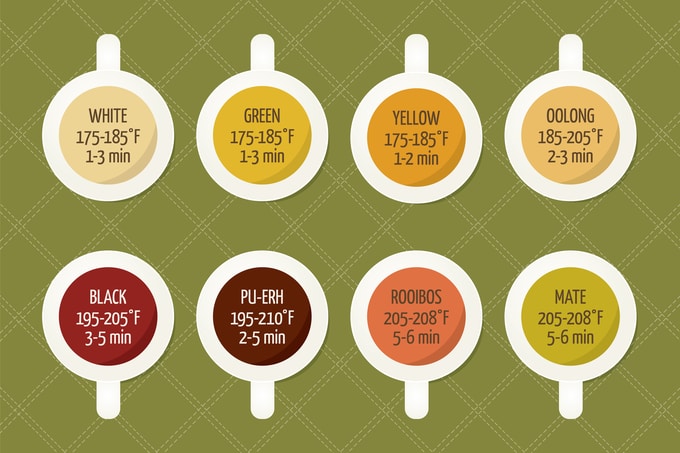
Different Teas: How Long To Steep Tea (Recommended)
We have many readers inquire about which tea is steeped longer; green or black. When it comes to steeping tea, there’s no such thing as a “universal steep” for all teas. Each type of true tea (green, black, oolong, yellow, white) and tisanes (herbal tea) have unique steeping times.
The particular times are what produce the lovely flavors we come to love and enjoy in our teacup. Something else comes into play that those of us who are hot tea lovers may not think about. That’s cold brewing tea. That brewing and steeping method is entirely different from its hot counterpart.
Green Tea
Although we’ve broken down the various true teas, green tea also has hundreds of varieties. Green teas should be brewed a certain way because green teas come from different countries, terroirs (environment) and are processed differently. It helps to know how long to steep green tea based on its variety.
Hot Brew
1-3 minutes at 180-185 degrees (F) (80-85 C)
Cold Brew
6-8 hours refrigerated
Black Tea
Just like green tea, there are many different varieties of black tea. Black teas come from different countries, are grown in different climates, and are harvested/processed differently. Black tea such as Assam is unique to a small region in India. Its steeping time will be different from that of Yunnan black tea from China. Again, knowing how long to steep black tea is essential to savor every sip to its fullest.
Hot Brew
3-5 minutes at 206 degrees (F) (97 degrees C)
Cold Brew
8-12 hours refrigerated
Yellow Tea
Yellow tea is one tea you don’t hear too much about. It’s considered rare because there are fewer tea farms that produce it. This tea somehow gets overshadowed by green, black, oolong, and white teas. The ambiguity of yellow tea also has much uncertainty in how it should be brewed and steeped.
Hot Brew
1-2 minutes at 185-205 degrees (F) (85-96 degrees C)
Cold Brew
6-8 hours refrigerated
Oolong Tea
Oolong tea is a very popular tea enjoyed by those who prefer a tea that is a cross between green and black tea. All of the robustness of black tea is present in a cup of this tea, along with the well-known earthy, vegetal elements and benefits of green tea. This tea’s steep time has its own parameters, which don’t include black or green tea steeping methods.
Hot Brew
1-3 minutes at 185-206 (F) (85-95 degrees C)
Cold Brew
6-8 hours refrigerated
White Tea
Now we come to the purest and most delicate tea of all teas. White tea also comes in different varieties, just as the other types of true teas. However, brewing and steeping this tea must be done in such a way as to avoid cooking the tea leaves. The last thing you want is to ruin your expensive fine white tea before it even hits your teacup.
Hot Brew
1-3 minutes at 175-185 degrees (F) (79-85 degrees C)
Cold Brew
6-8 hours refrigerated
Tisanes (Herbal Teas)
Tisanes are an entity unto their own, and because there are so many, there will be various brewing/steeping methods.
Hot Brew
4-5+ minutes at 206 degrees (F) (95 degrees C)
Cold Brew
12-24 hours refrigerated
Steeping Made Simple
So now you have a guide to help you properly steep your next cup of tea. There’s no definitive way to steep tea, so you may find that your palette prefers a shorter or longer steep compared to other tea drinkers, and that’s okay. It’s all about savoring the act of making tea and enjoying it!
